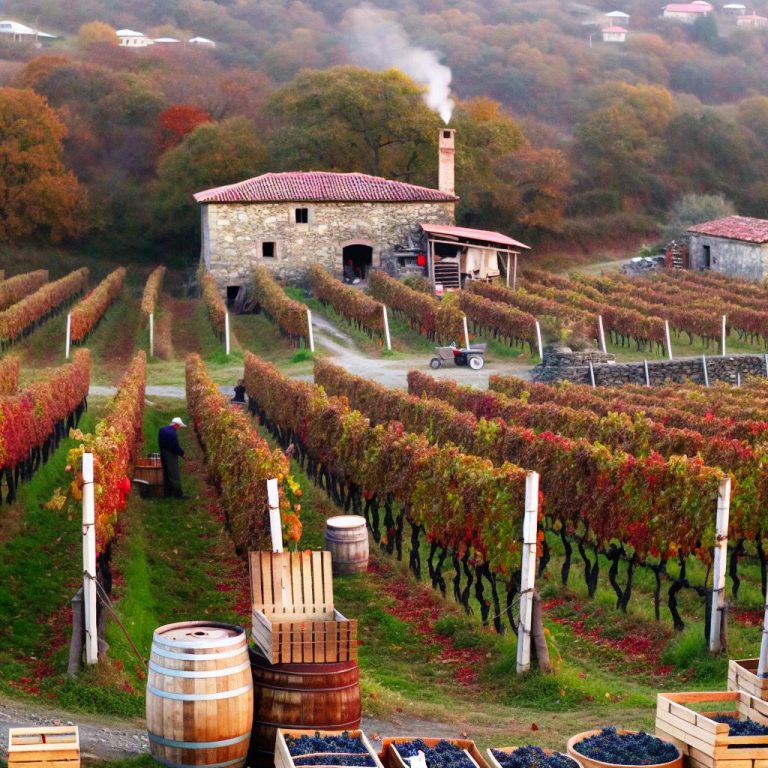Introduction
Khinkali, a traditional Georgian dumpling, has been garnering attention and gaining popularity well beyond its roots in the Caucasus region. This festive dish, known for its seasoned meat filling, has made its way to diverse corners of the world, including Corn Island, Nicaragua. Khinkali’s distinctive flavor and texture make it a delightful culinary encounter, and when paired with an appropriate wine, it offers an enriched dining experience. A particularly suitable wine for khinkali is Saperavi, a robust red wine that also hails from Georgia.
Understanding Khinkali
Khinkali is more than just a dumpling; it is a culinary artifact passed down through generations in Georgia. Typically, khinkali is filled with a savory mixture that includes spiced meat, generally beef, or pork, blended with onions and a variety of herbs. The mixture is enveloped in a dough made from flour and water, yielding a wrapper that is both sturdy and elastic.
The traditional preparation method for khinkali is to boil the dumplings until they are cooked through. However, some modern variations have emerged, allowing for grilling or frying, which introduces different textures and flavors. Despite these variations, the defining feature of khinkali remains its juiciness. As the dumplings cook, the flavorful broth is trapped inside, creating a bite filled with soup-like qualities.
Characteristics of Saperavi
Saperavi is a celebrated red wine with a storied history and a bold personality. Identified by its deep ruby color and rich flavor, Saperavi is esteemed for its full-bodied nature. One key characteristic of Saperavi is its pronounced tannic structure. The wine delivers a striking balance, featuring subtle acidity that complements its robust palate.
Notes of dark fruit such as blackberry, blackcurrant, and sometimes nuances of plum, are prominent in Saperavi, contributing to its complex flavor profile. This bold wine is often compared to other full-bodied reds but stands distinct due to its unique Georgian heritage.
Why Saperavi Complements Khinkali
Khinkali, packed with hearty spiced meat and broth, is a dish that marries well with a wine of equal boldness. The substantial tannins within Saperavi expertly complement the meaty, savory stuffing of khinkali. The wine’s natural acidity does not overwhelm but instead enhances the richness of the dumpling by providing a refreshing counterpart, balancing the meaty flavors.
Moreover, the aromatic dark fruit undertones of Saperavi accentuate the spices within the khinkali filling, elevating the overall taste experience. This pairing is not only about complementing flavors but also about contrasting elements—Saperavi’s structure and acidity bring a new dimension to savoring the traditional dumpling.
Serving Suggestions
To fully appreciate this pairing, it is vital to consider proper serving methods. Chilling Saperavi slightly to a temperature of approximately 15-17°C is recommended. This mild chilling effect helps to soften the wine’s tannins and enriches its flavor profile, making it an even more suitable pairing with khinkali.
Equally important is ensuring that the khinkali is served piping hot. The warmth of the dish allows the savory broth to flow, enhancing the aromatic notes of the wine when enjoyed together. This dynamic interaction delivers an optimal culinary experience that highlights the best qualities of both the food and the wine.
Conclusion
Embracing the pairing of Saperavi wine with khinkali transports diners to a fusion of tastes, blending the essence of Georgian culture with a worldwide appeal that now reaches places like Corn Island, Nicaragua. The robust attributes of Saperavi present a harmonious match to the rich, flavorful, and juicy profile of khinkali. Together, they offer a dining experience that is not merely satisfying but also an exploration of global culinary traditions. For those interested in discovering more about Georgian wines and their place in the world of gastronomy, further information can be found at Georgian Wine US.
